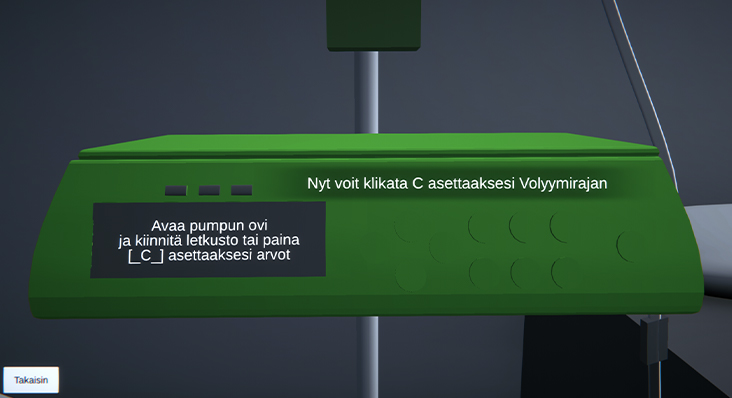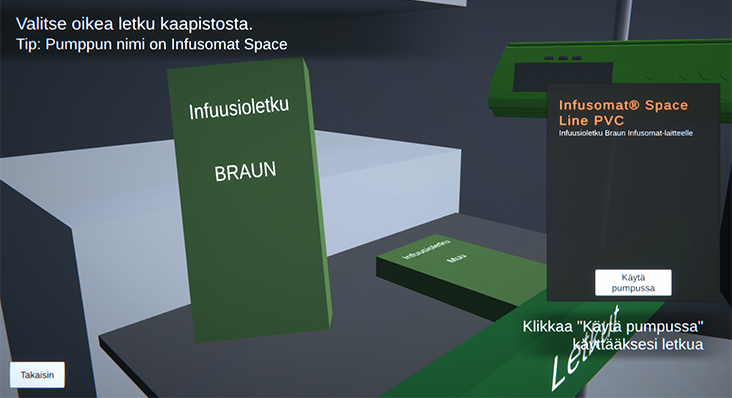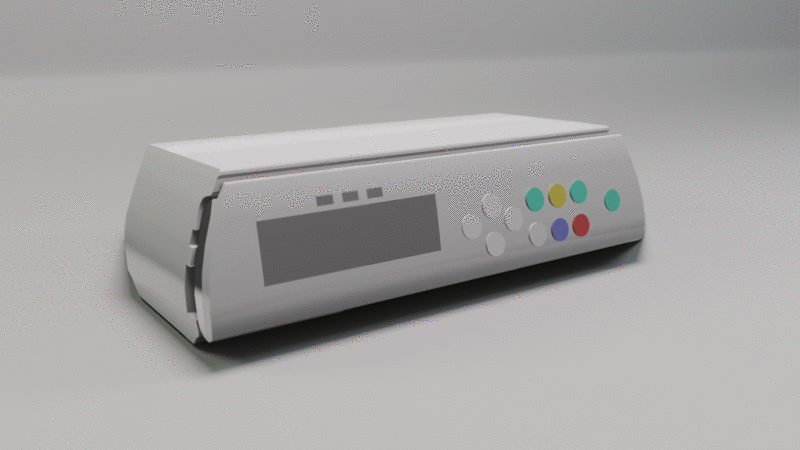Advances in technology have made it possible to create more advanced games for educational purposes. It is no longer just “point and click” style computer games for children in the late 90s, but developments have given us the keys to assist in more complex learning. The wildest dreams of digital twins that utilize virtual reality have already come true and being constantly developed in the FrostBit laboratory. However, for the consumer, the virtual world viewed through glasses can still be foreign.
At the same time as the spearhead of technological development is far ahead of the consumer, we have also reached a different milestone in the world of educational games: each of us has access to a digital terminal that opens the door to learning in increasingly diverse ways. In practice, therefore, everyone can use educational games in their daily learning via a smartphone or computer. The quality and diverse content of games have also improved in the same proportion, and in recent years various device manufacturers also seem to be slowly waking up to the opportunities brought by digitalization. Virtual reality will reach us all at one point, but at this point we must at least leave behind the old moldy cereal-pack games.
Virtual learning in healthcare
In co-operation with the social and healthcare section, we are currently implementing a simple project as part of the Nursing RDI activity, the aim of which is to create a tutorial that teaches how to use an infusion pump. This Braun Infusomat Space is an everyday tool for the nurse and learning how to use it is one small but important part of nursing studies. Traditionally, the infusion pump is learned to be used in the classroom without the patient and in theory it is possible for the student to go through the operation of the device as much as they wish. In practice, however, there are often many students, limited time, and personal learning difficulties that can get in the way of learning, and because of these aspects, traditional classroom instruction does not always guarantee that all students will be able to use the device enough. A nursing student focuses mainly in learning to take care of the patient, and the use of technical equipment is not necessarily their primary focus. Infusomat is a reasonably valuable and even a little “threatening” device, and when practicing it, the student often learns certain procedures and tries to avoid mistakes. Thus, learning to use a device does not actually involve deep learning, but mainly the ability to repeat what has been learned. Such learning procedures lead to the expected result, but as an unfortunate side effect, the student does not actually get to know the device but merely uses it in predetermined situations. In case of problem situations or in the event of a disturbance, the ability to react and act on the situation is not the best, and the student may not feel confident when using the device.


Gamified learning can enhance the students’ deep learning. Instead of learning how to use an infusion pump only in a controlled way in the classroom, the student can continue to “play with the device” in the virtual world. Once the operation of the entire device has been 3D-modelled accurately in the game and the interface is suitably simple, the player will be able to try out different functions and resolve problem situations without worrying about accidentally breaking the pump. By utilizing the game, the student achieves confidence in using the device and then the operation of the correct infusion pump feels much more familiar as well as easier to learn in practice.
How are the functions of the infusion pump transferred to the game?
The most important aspects of making this game are the following:
- User interface
- Device operation
- Correspondence of the 3D model

What is essential, of course, is that the developer not only thoroughly understands the operation of the device, but also models it with the accuracy required for its operation. A big factor in particular is user orientation: a game can be useless to its target audience if the target audience is unable to use it. The developer must assume that the user of the device has little or no experience in playing different games and therefore must understand to develop functionalities so that no user experience difficulties will alter the learning process. In practice, this means that features very familiar to many digital games, such as first-person character movement and camera control, must be omitted or made so simple that they don’t interfere with the gaming experience. It is unnecessary to force the player to learn the seemingly complicated interface that they even get the opportunity to learn how to use the device himself.
The development phase has two stages: device modelling and construction of the game mechanics. Blender-3D Software is used to model the infusion pump and game mechanics are created with the Unity game engine. In modelling the device, it is essential to model all those external features that matter either in terms of game mechanics (buttons, screens, power cords) or visual equivalence (round arc of the door, aspect ratio). In game mechanics, an accurate representation of the infusion pump operation is important. For example, when you press the start button on the device, the infusion pump emits a small beep, the lights turn on, and then a text appears on the display to indicate that it has started. All of those functions are essential to make it easy for a player to transfer what they have learned from the digital to their real world. However, it is not essential that the internal operating logic should be exactly the same as that of the device being modelled.

The end result can be considered as the crucial point: the game must be able to convince the player that it works in the same way as the real-world device it represents. The choices made in game development must therefore be viewed from the perspective of transferring what has been learned to the real world: if the function is important for using the right physical device, then it must also be implemented in the digital version. Thus, a game made of an infusion pump does not have to be a perfect digital twin, but mainly a model that simulates its operation as accurately as possible.
The project is still ongoing, but looks very promising. Combining game development with the development of learning outcomes is an interesting and important direction that will certainly provide interesting data as the game develops. The tutorial is scheduled to be ready in June 2021. The game will run on a regular computer, mobile device, and in addition, the possibility of virtual reality will also be explored.
‘TKI-toiminta digiaikaan’ -project is funded by Lapin Liitto with EAKR-funding.


Samuli Valkama
Samuli Valkama works as a specialist in the FrostBit software laboratory at the University of Lapland. The focus of his work is on project and game design, but the increase in the number of video productions in particular has increased.

